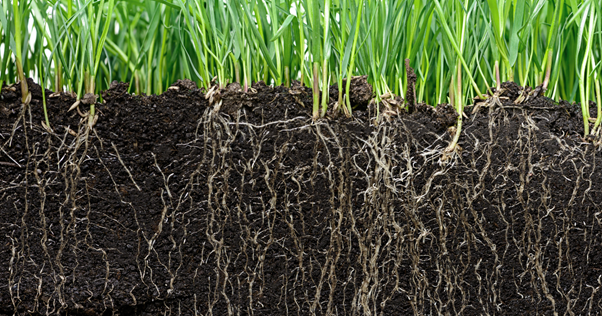Trace element specialists at ANIMAX are here with all you need to know about trace element shortages and supplementation strategies for all sizes of cattle.
It’s not new news that the more precisely we supply our herds with the nutrients they need to function, the more control we have over their health and performance.
What is new, is how we can more easily achieve for our larger dairy, cows, suckler cows and bulls.
As sited in the graph below, most dairy cows enter the milking herd at a weight of 500 kg and can grow on up to almost 700 kg. The average size of a mature suckler cow can be anything from 500 kg up to 700 kg.

Source: AHDB
Transitioning into the milking or suckler herd for the first time, and transitioning from one lactation to the next, are key times of stress for our adult ‘plus size’ cows.
It is instrumental that we support each individual dairy or suckler cow with everything they need nutritionally and environmentally to stand up to challenges and perform to their full genetic potential.
Complimentary to any type of farming operation and feeding system, Tracesure Cattle XL now enables farmers to supply cattle over 500 kg with enough essential trace elements for six months in just one bolus and in one single application, rather than the two to four applications needed previously. This bolus contains the highest levels of trace elements, as needed by larger cattle, in a novel safe form.
Here’s the answers to your trace element questions:
- Forage nutrition – what are my cows deficient in?
- Proactive bolusing – how does it work?
- Bolusing vs Feeding – is it one or the other?
- Bolus choices – what do I look out for?
Trace elements – what are my cows deficient in?
Forage is a highly valuable but highly variable nutrition source. In most cases, forage alone doesn’t offer enough essential trace elements for ruminant needs.
Most forages grown are deficient in the essential trace elements, and these contribute to metabolic function, growth and development, immunity, tissue repair, and reproduction.
While the clinical deficiencies can seem most critical – severe illness and even death – it’s the subclinical impacts that can impact most on health and productivity.
During a ruminant’s life cycle, there will be a time when they are deficient in one or more trace elements, which can impact on their performance – reproduction, growth, and or yield.

Table: Trace elements and their roles
Copper (Cu)
Copper is a part of many critical enzymes involved a wide range of functions from red blood cells, energy cycles and impacts areas such as cell metabolism, growth, fertility, and immune functions to name a few.
How a deficiency can present itself:
- Poor growth rates
- Poor conception and fertility
- Reduced feed efficiency
- Changes to coat colour and condition and quality
- Diarrhoea
- More prone to parasitic gastroenteritis
- Poor hoof quality
Selenium (Se)
Selenium is critical for several key enzymes involved in immune responses. It is best known for its role in antioxidant defence to cells against damage in conjunction with Vitamin E.
How a deficiency can present itself:
- Retained placentas
- Suboptimal fertility
- Sudden onset stiffness and inability to stand in younger animals
- Mastitis and high SCC
- Weak calves unwilling to suck
- Suboptimal milk production related to subclinical disease
Iodine (I)
Iodine plays a critical role in production of thyroid hormone which is involved in metabolism of the body and conversion of some pro-enzymes to active forms.
How a deficiency can present itself:
- Poor growth rate
- Poor milk production
- Irregular cycles
- Retained placentas – linked to selenium
- Failure to thrive in newly born calves
- Enlarged thyroid glands
- Stillborn calves
Cobalt (Co)
Cobalt is needed for rumen bacteria to synthesise Vitamin B12 – which forms two critical enzymes, is essential for energy metabolism and the production of red blood cells.
How a deficiency can present itself:
- Reduced appetite
- Reduced growth
- Poor hair quality
- Anaemia
- Diarrhoea
Trace elements are just as critical as macro minerals, but a deficiency can be more subtle and take longer to be noticed. Also trace elements can be toxic if given in excess, so just give enough, as more than enough is both expensive but also harmful.
Strategic proactive bolusing – how does it work?
Giving a bolus to adult lactating cows is a nutritional practice that’s been around for many years now.
A bolus is given orally and commonly advised to give every 6 months. During this time, if a critical mass it lodges in the reticulum. The mode of action depends on the bolus type and which trace element is involved. Depending on the trace element, these are either used where needed or stored in a modified form until they are required.
By proactively or strategically giving a bolus, trace elements are supplied for a duration to be used in enzymes or thyroid hormone for key functions in the ruminant. Trace element deficiencies result in sub clinical or clinical diseases and a bolus can supply these key trace elements
Being proactive with strategic management practices to supply trace elements is key to avoiding trace element deficiencies and associated diseases.
A bolus is an investment that will pay back when you consider the time and money that can be wasted on fixing related problems.
Bolusing vs Feeding – is it one or the other?
These essential trace elements can be supplied through straights, blends, powders, and buckets. The choice is wide, but all have their pros and cons.
With these modes of feeding, we still can’t be sure every individual animal is getting enough or too much all the time for optimal performance. Often these have lower levels to avoid toxicity, for example if one animal is greedier or overeats.
That’s where proactive bolusing comes in. By complementing feeding strategies with proactive blousing using a Tracesure bolus, we know that each cow will have enough of the essential trace elements critical to function and performance for a set period of time.
Bolus choices – what to look out for?
One of the most crucial factors in bolusing safely and cost-effectively, is ensuring enough trace elements. That is, not too much and not too little. This has never been more relevant than today when livestock farmers are coping with all-time high input prices and margin pressures.
The three key aspects to consider are:
- Mode of action
Most boluses claim to ‘erode’, ‘dissolve’ or ‘disintegrate’ the trace elements into the reticulum for a 6 month or longer period. However, the release pattern must also be considered. Boluses can commonly lose weight and become smaller over time, as such there is a raised chance of the bolus being regurgitated or passed.
Tracesure Cattle XL features a new patented waxed-groove diffusion technology which regulates the rate of release and maintains mass for duration of activity. The grooves allow new surface area to be exposed and thus diffusion of trace elements from these sections. This has allowed higher levels of trace element inclusion in a single bolus.
2. Quality and quantity of ingredients
As the saying goes, not all trace elements are the same. Some have lower absorbability and are more prone to by-pass through the animal. Some boluses promote unnecessary trace elements such as zinc or manganese and vitamins. Vitamins are not likely to survive many production processes and are very unstable with short shelf lives once in a liquid, like rumen fluid.
The Tracesure Cattle XL bolus is equivalent to the application of two or more of the alternative boluses in the market. The diffusion technology has enabled safe doubling up in the quantity of essential trace elements, with 1,000 mg of selenium, without the risk of toxicity.
3. Size of bolus
Pertinent to the topic of supplementing larger cattle, it is important to choose the right sized bolus for the right sized animal. We’ve talked about the challenge of not supplying enough, but supplying more than enough trace elements will either by-pass what an animal can physically absorb, or worse, cause toxicity. Either way, it is a waste of money.
Tracesure Cattle XL is the only bolus on the market that can give cattle 500 kg and over with enough essential trace elements for a 6 month period in 1 application. Tracesure also comes in a standard size for cows and heifers below 500 kg.
Dairy Data
Independent trial research by Teagasc Morepark on dry cows fed minerals and low levels of concentrate in early lactation showed a net financial benefit of £4,600/€5,236 per 100 cows, or a 5:1 return on investment, when bolusing with Tracesure.
The research was conducted on 1,381 dairy cattle split into 4 groups –
- Control – no bolus.
- Dry – received a Tracesure bolus at dry off only.
- Breeding – received a Tracesure bolus 6 weeks before mating start date.
- Dry off and breeding – received a Tracesure bolus at dry off and 6 weeks before mating start date.
The pregnancy rate at first AI in all the bolused groups were higher compared to the control group. Group 4 had the highest conception rate at first AI, 3% higher than control, and the final pregnancy rates were also higher in all bolused groups compared the control with the group 3 & 4 being 2% higher than the control.
The cost of two boluses is £13.40/€15.26 per cow (bolus at dry off and breeding for optimal results) for a potential benefit of two additional calves (£600.00/€683.00) and two more lactations (£5,400/€6,148).
Beef Data
Work at Ohio State University has shown that Angus beef cattle given essential trace elements through a Tracesure bolus consumed a higher amount of dry matter and grew faster than animals not supplemented with a bolus. In the same study, the cattle converted feed more efficiently than those given trace elements in their feed.
Click HERE to find your local specialist and your nearest stockist.



Pingback: Are they getting enough to transition smoothly? - Carr's Group
Pingback: Autumn calving: precision trace element nutrition to achieve a better transition - Carr's Group